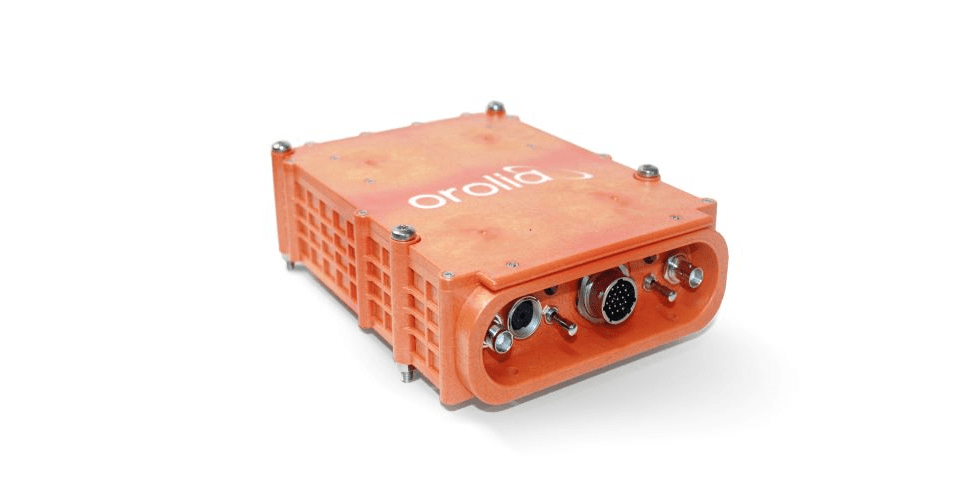
Orolia’s Ultima-DT will be installed on every in-production Airbus passenger-carrying aircraft type starting in 2023. (Orolia)
Airbus has committed to equipping all of its in-production aircraft types with line-fit emergency locator technology (ELT) inspired by a European Union Aviation Safety Agency (EASA) regulatory mandate related to the disappearance of Malaysia Airlines flight MH370. Under a new agreement with Paris, France-based aircraft ELT manufacturer Orolia, Ultima-DT will be installed on a standard basis on all Airbus commercial aircraft programs, including the A220, A320 family, A330, and A350 according to a Dec. 9 press release.
The technology will be installed on Airbus aircraft as part of a single source, multi-year program contract awarded to Orolia. As per the (ICAO) Autonomous Distress Tracking (ADT) mandate was birthed as part of its Global Aeronautical Distress and Safety System (GADSS) initiative and European Union mandate, all new aircraft delivered from January 2023 shall be able to autonomously report their location anywhere in the world and determine the end of flight location to help rescue teams rapidly locate the aircraft and recover flight recorders.
“We are extremely proud to be selected by Airbus to provide with the world’s first aircraft manufacturer compliance with the latest safety regulations. A single-source, multi-year program selection for the delivery of mandatory equipment is a testimonial to our innovation capabilities, the reliability of Orolia as a critical equipment manufacturer, and our know-how in terms of large and complex program management,” Orolia CEO Jean-Yves Courtois said in the release.
Developed after the disappearance of the Malaysia Airlines Flight MH370, it was to occur on or after January 21, 2021. To comply with the mandate, aircraft with a maximum take-off weight of over 27,000 kg (60,000 lbs.) with an airworthiness certificate issued would have to autonomously transmit position information once every minute or less when an aircraft is in distress.

The Airbus A220-100 and A220-300 are among the in-service aircraft types that will receive the ELT line-fit upgrades. (Airbus)
ICAO first adopted Amendment 39 to Annex 6 of its normal aircraft tracking standards and recommended practices (SARPs) in November 2015. The SARPs require operators to track aircraft operating under normal flight conditions every 15 minutes with an optional abnormal-event tracking capability. A separate ADT requirement – the one Orolia’s technology will fulfill on Airbus airliners – was included in ICAO’s standards amendment and has been implemented on a nation-by-nation basis by individual civil aviation regulatory agencies.
Following a two-year postponement, the standard for the distress tracking element of GADSS will now be applicable as of January 2023 for new-build aircraft. Following a survey by ICAO on preparedness, the agency’s Air Navigation Commission recommended this postponement to 2023, which was approved by the ICAO Council this year.
That gives Airbus enough time to integrate the adoption of Orolia’s Ultima-DT into their production schedules. The April 2019 edition of Avionics International featured an overview of Orolia’s lithium-ion battery-powered with an internal antenna capable of transmitting 406 and 121.5 MHz signals. The antenna also has embedded global navigation satellite system reception and Orolia also provides a separate ADT module that gets installed within the aircraft’s cockpit control panel.
When Ultima-DT’s tracking module captures a distress signal or condition and transmits it to the ELT, a distress message can be remitted to air traffic controllers, search and rescue agencies, and the aircraft operator’s ground-based personnel. The module’s signaling of a distress condition then also triggers minute-by-minute tracking.
In the event of an aircraft experiencing a power failure, the new ELT still transmits distress signals to the COSPAS SARSAT satellite system, which has provided free search and rescue satellite emergency locator service to the aviation industry for more than 20 years.
Whereas previous generation ELT distress tracking technology was activated by G-forces, Ultima-DT is activated by distress conditions that are likely to lead to a crash or accident.
“First units will be delivered to Airbus for final assembly line installation in 2022, ensuring that aircraft delivered from January 2023 meet the autonomous distress tracking requirements,” Orolia said in the release.